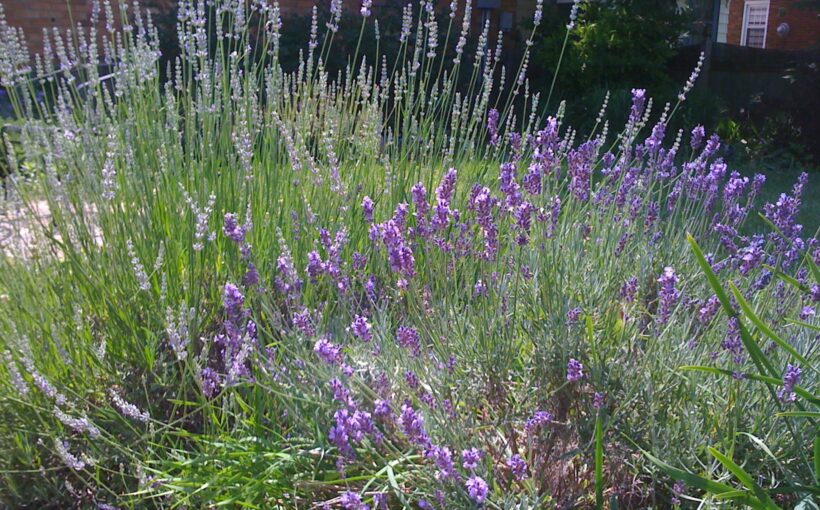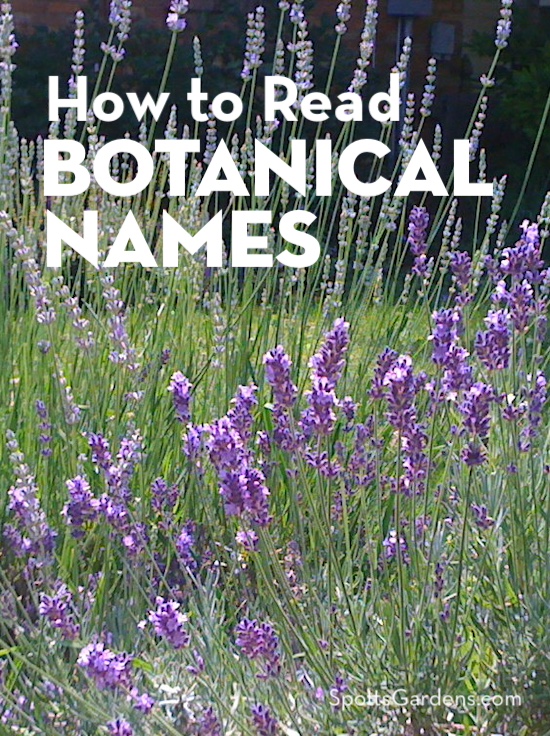While common names for plants are charming and often colorful, they vary from place to place. Binomial nomenclature, on the other hand, is the lingua franca of plant nerds everywhere. Learn to read botanical names, and you can make yourself understood at every nursery and botanical garden.
The Name Game
Botanical names are based on two names, so this system is called “binomial nomenclature.” You might also hear these referred to as “Latin names,” but they’re actually a hodgepodge of Latin, Greek, and other sources.
An eighteenth-century botanist named Carl Linnaeus popularized the binomial system, which short-circuited the incredibly unwieldy names common before him. Linnaeus’s system breaks the name into two components. The first is the genus (the general) and the second is the species (the specific).
The Straight Species
All botanical names start with the genus and species. Genus is capitalized; species is lower case. Both words are italicized. Together, these words give you the “straight species”: a species as it evolved in nature without human intervention.
Straight species: Lavandula angustifolia
Name breakdown: Lavandula is the genus, and angustifolia is the species.
Common name: English lavender
But Lavandula dentata, French lavender, is a different species, even though it’s part of the same genus, Lavandula. That’s handy to know, because L. angustifolia can survive an Indiana winter, but L. dentanta is toast as soon as the frost rolls in.
The Variety or Cultivar
Most plants that you see in the garden are not straight species. They have been manipulated by human beings. Those cultivated plants have a variety name in addition to their species name. The variety name is given in single quotes, in roman (non-italicized) type.
Cultivated variety: Lavandula angustifolia ‘Hidcote’
Name breakdown: The genus is Lavandula, the species is angustifolia, and the variety name is Hidcote.
Common name: Hidcote English lavender
There are different kinds of Lavandula angustifolia, bred for different heights, bloom times, colors, etc. Each one has a different variety name. Lavandula angustifolia ‘Lady’ is not the same plant as Lavandula angustifolia ‘Hidcote,’ even though they are the same species.
The variety is also sometimes called the cultivar, which is short for “cultivated variety.” You may also hear the term “nativar,” which is short for “native cultivated variety” or a named variety of a native plant.
The Trade Name
New plants often have trade names in addition to cultivar names. These are easy-to-remember names designed for marketing, like Knock Out rose, Endless Summer hydrangea, and PowWow echinacea.
In these cases, the trade name is the one used by garden centers, instead of the cultivar name. Trade names are not placed in quotes, and the capitalization or punctuation varies.
Trade name: Sensational! Lavender
Botanical name: Lavandula x intermedia ‘Tesseract’, also written as Lavandula x SENSATIONAL!
The genus is Lavandula. The use of “x intermedia” means this is a hybrid of two or more different species in the Lavandula genus. And ‘Tesseract’ is the variety name. So you can see why the plant company markets it as Sensational! Lavender instead of using the more complicated botanical name!
If you learn just this much about botanical names, you’ll be well positioned to shop for and purchase exactly the plants you want.
But Wait! There’s More!
The names themselves offer you a clue about the plants. Most are taken from Greek or Latin rootwords, so you can often puzzle out certain characteristics of the plant based on the name.
Lavendula angustifolia ‘Munstead’
“Angustus” means narrow, and “folius” is leafed, so “angustifolia” means narrow-leafed. The leaves on an English lavender are narrow. “Dentata” on the other hand, mean “toothed,” and a French lavender has leaves with jagged edges that look like teeth.
Handy, no? Here are a few of the root words that we find particularly useful.
Word Endings for Parts of Plant
- -andrus = anthers
- -anthus, -flora = flowers
- -carpa = fruit
- -caulis = stem
- -cephalus =head
- -flora = flower
- -folia, -phylla = leaf
- -frons = frond
- -phylla = leaf
- -podus = stem
Colors
- alba = white
- aureo = gold (as in Sedum aureum)
- bicolor = having two colors
- cardinalis = bright red (as in Lobelia cardinalis)
- flavus = yellow (Cornus sericea ‘Flaviramea’ is a yellow-stemmed variety)
- melano = dark (as in Aronia melanocarpa)
- niger = black (as in Helleborus niger)
- pallida = pale (as in Echinacea pallida)
- ruber = red (Panicum virgatum ‘Rubrum’ is a red-bladed variety)
Habit
- nanus = dwarf (as in Betula nana or Salix purpurea ‘Nana’)
- officinalis = of the pharmacopoeia; a plant with ‘officinalis’ in the name was at one time used as medicine (as in Salvia officinalis)
- repens = creeping (as in Ajuga reptans)
- prostratus = lying flat but not rooting (as in Rosmarinus officinalis ‘Prostratus’)
Place Names
- australis = southern (as in Baptisia australis)
- canadensis = from Canada or northeastern US, and likely to be native to Indiana (as in Amelanchier canadenisis, Cercis canadensis)
- sibericus = from Siberia (as in Iris siberica)
- sinicus, sinensis = from China (as in Camellia sinensis)
- japonica = from Japan (as in Spirea japonica)
- virginica = from Virginia, likely to be native to Indiana (as in Juniperus virginiana)
For More About Botanical Names
If you’d like to know more about botanical names, we recommend Latin for Gardeners, by Lorraine Harrison. This substantial book lists over 3000 plant names, along with pronunciation and usage guidelines
Hardcore word nerds and botanists might prefer the Grammatical Dictionary of Botanical Latin hosted at Missouri Botanical Garden’s web site. Developed to help taxonomists name new plants, it’s a searchable database of word meanings, along with “annotations, explanations, observations, and grammatical guides.”

